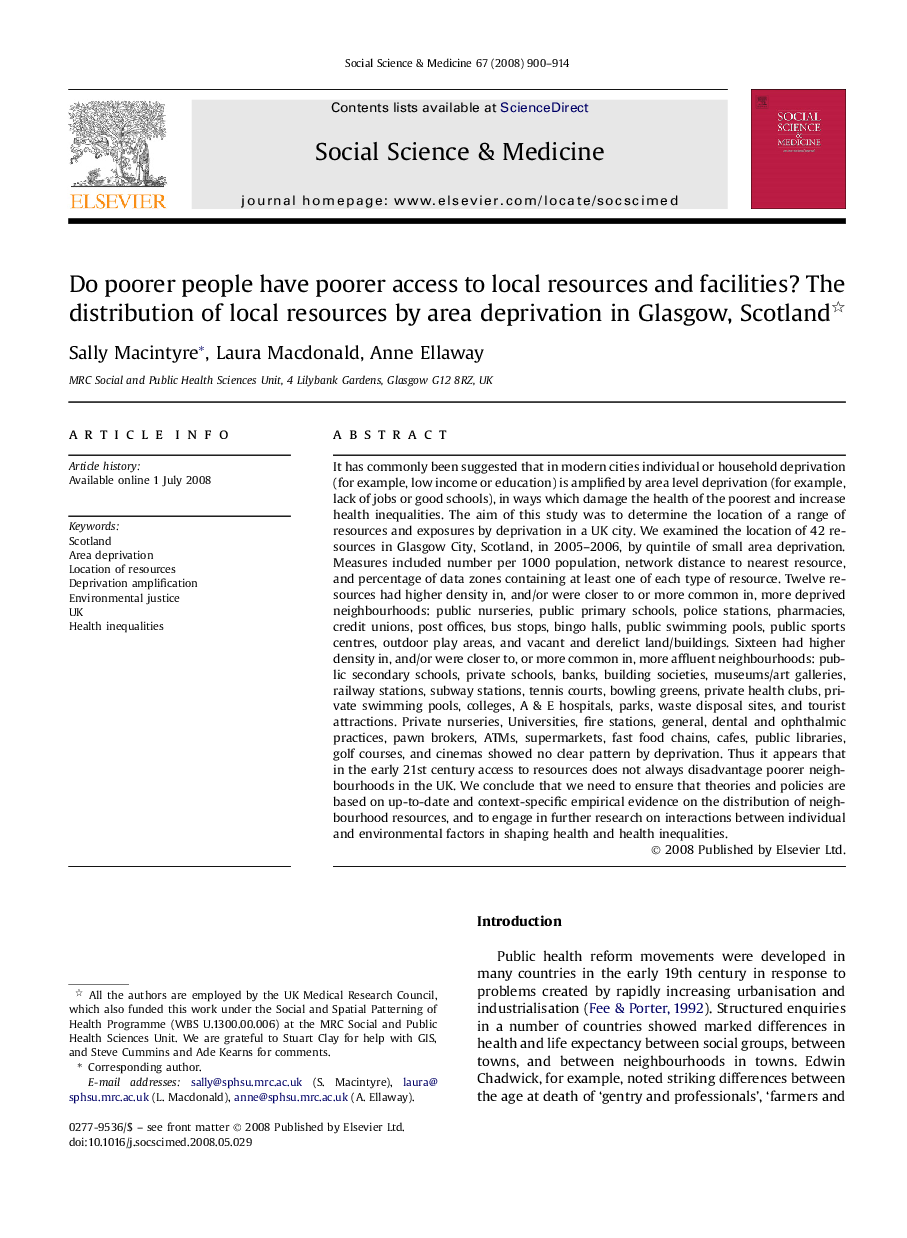| کد مقاله | کد نشریه | سال انتشار | مقاله انگلیسی | نسخه تمام متن |
|---|---|---|---|---|
| 10472291 | 927632 | 2008 | 15 صفحه PDF | دانلود رایگان |
عنوان انگلیسی مقاله ISI
Do poorer people have poorer access to local resources and facilities? The distribution of local resources by area deprivation in Glasgow, Scotland
دانلود مقاله + سفارش ترجمه
دانلود مقاله ISI انگلیسی
رایگان برای ایرانیان
کلمات کلیدی
موضوعات مرتبط
علوم پزشکی و سلامت
پزشکی و دندانپزشکی
سیاست های بهداشت و سلامت عمومی
پیش نمایش صفحه اول مقاله

چکیده انگلیسی
It has commonly been suggested that in modern cities individual or household deprivation (for example, low income or education) is amplified by area level deprivation (for example, lack of jobs or good schools), in ways which damage the health of the poorest and increase health inequalities. The aim of this study was to determine the location of a range of resources and exposures by deprivation in a UK city. We examined the location of 42 resources in Glasgow City, Scotland, in 2005-2006, by quintile of small area deprivation. Measures included number per 1000 population, network distance to nearest resource, and percentage of data zones containing at least one of each type of resource. Twelve resources had higher density in, and/or were closer to or more common in, more deprived neighbourhoods: public nurseries, public primary schools, police stations, pharmacies, credit unions, post offices, bus stops, bingo halls, public swimming pools, public sports centres, outdoor play areas, and vacant and derelict land/buildings. Sixteen had higher density in, and/or were closer to, or more common in, more affluent neighbourhoods: public secondary schools, private schools, banks, building societies, museums/art galleries, railway stations, subway stations, tennis courts, bowling greens, private health clubs, private swimming pools, colleges, A & E hospitals, parks, waste disposal sites, and tourist attractions. Private nurseries, Universities, fire stations, general, dental and ophthalmic practices, pawn brokers, ATMs, supermarkets, fast food chains, cafes, public libraries, golf courses, and cinemas showed no clear pattern by deprivation. Thus it appears that in the early 21st century access to resources does not always disadvantage poorer neighbourhoods in the UK. We conclude that we need to ensure that theories and policies are based on up-to-date and context-specific empirical evidence on the distribution of neighbourhood resources, and to engage in further research on interactions between individual and environmental factors in shaping health and health inequalities.
ناشر
Database: Elsevier - ScienceDirect (ساینس دایرکت)
Journal: Social Science & Medicine - Volume 67, Issue 6, September 2008, Pages 900-914
Journal: Social Science & Medicine - Volume 67, Issue 6, September 2008, Pages 900-914
نویسندگان
Sally Macintyre, Laura Macdonald, Anne Ellaway,